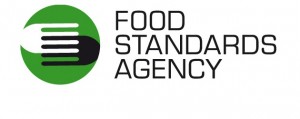The Food Standards Agency has produced a summary of its research published in February and March 2013. The eight areas of research include an evaluation into reducing the shedding of E.coli in cattle in the UK, the safety of sous vide foods and new approaches for managing foodborne disease outbreaks.
 |
| [relatedPosts title=”Related Posts”] |
|
|
Reducing the shedding of E.coli O157 in cattle
By evaluating the current literature and engaging with stakeholders, this study examined the feasibility of introducing, in the UK, on-farm controls for reducing E.coli O157 shedding in cattle. Both vaccines and probiotics have shown promise in North American studies. Further engagement with relevant stakeholder groups indicated that the open-farm sector was interested in exploring the use of vaccines. However, demand for the application of on-farm controls for E.coli O157 by beef and dairy farmers in the UK would likely to be limited in the absence of clear evidence that such measures would be effective in protecting public health.
Potential for rapid on-site testing at border inspection posts
This project reviewed the current systems of residue and contaminant control of imported food, focusing on the use of rapid diagnostics. It questioned whether the routine use of rapid screening at border inspection posts (BIPs) was a viable option. A questionnaire and mini-demonstration exercise drew attention to the issues that need to be addressed. The report includes recommendations for further work to highlight the necessary steps to implement this type of screening on a range of food and feed commodities and products of animal origin.
Safety of sous vide food
Sous vide is a method of cooking food vacuum packed in a sealed plastic pouch, then cooked by submersion in a water bath. Recent years have seen an increase in the number of sous vide foods being cooked at low temperatures (e.g. 42°C to 70°C). This study involved a feasibility study on extending models in the database called ‘Combase Predictor’ . It allowed the calculation of the lethal effect, normally associated with heat treatments at relatively low temperatures, on the reduction of food pathogens.
New approaches for managing foodborne disease outbreaks
This desk-based study aimed to identify and review the potential of emerging molecular microbiology technologies in the management of foodborne disease outbreaks. It outlines current and emerging genomic approaches that may have the potential to improve the management of foodborne disease outbreaks and provides examples of specific stages in the outbreak investigation process which would benefit from the use of molecular approaches.
Slaughterhouse social science project
The aim of this research was to better understand the social processes in place within slaughterhouses to gain insight into the potential impact of regulatory reform. The project aimed to deliver a better understanding of the drivers and barriers that are faced by food business organisations, veterinarians and meat hygiene inspectors in carrying out their work.
An evaluation of food chain information and inspection results
This review examined the value and use of food chain information (FCI) and collection and communication of inspection results (CCIR) forms. This was done to identify and implement possible changes, resulting in an improved system of recording information for surveillance purposes and official meat controls.
An assessment for visual-only post-mortem meat inspections
A qualitative risk assessment was carried out to establish if post-mortem visual inspection of red meat (except pigs) and large game alone represents an increased risk to public health, as well as to animal health and welfare. The effectiveness and benefits of visual-only inspection in controlling risks, compared to traditional inspection, were examined.
Trial of visual inspection of fattening pigs from non-controlled housing conditions
This research aimed to establish if post mortem visual-only inspections, for pigs from non-controlled housing conditions (‘outdoor pigs’), can be safely implemented. More than 11,000 carcasses of fattening pigs from non-controlled housing conditions were inspected using both PMI methods (traditional and visual-only inspection). A baseline of type, frequency and distribution of conditions detected by both methods was established and then compared.





